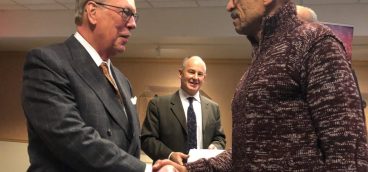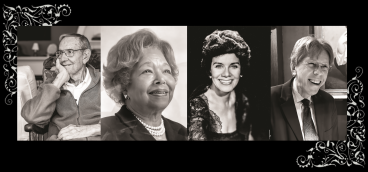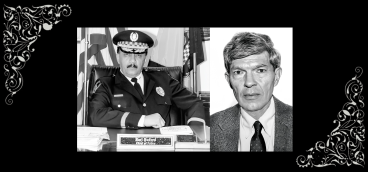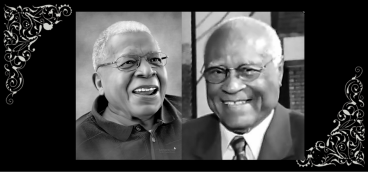Soffer, Greer, Reich, Skrinjar, Pitterich, Spatafore, Lubetz, Stancell-Condron Dodd, Bruschi, Pistella, Poppenberg, Poppenberg, Foy, Parsons, Muse, Christie, Aldridge, Rooney, Etzel, Dindak
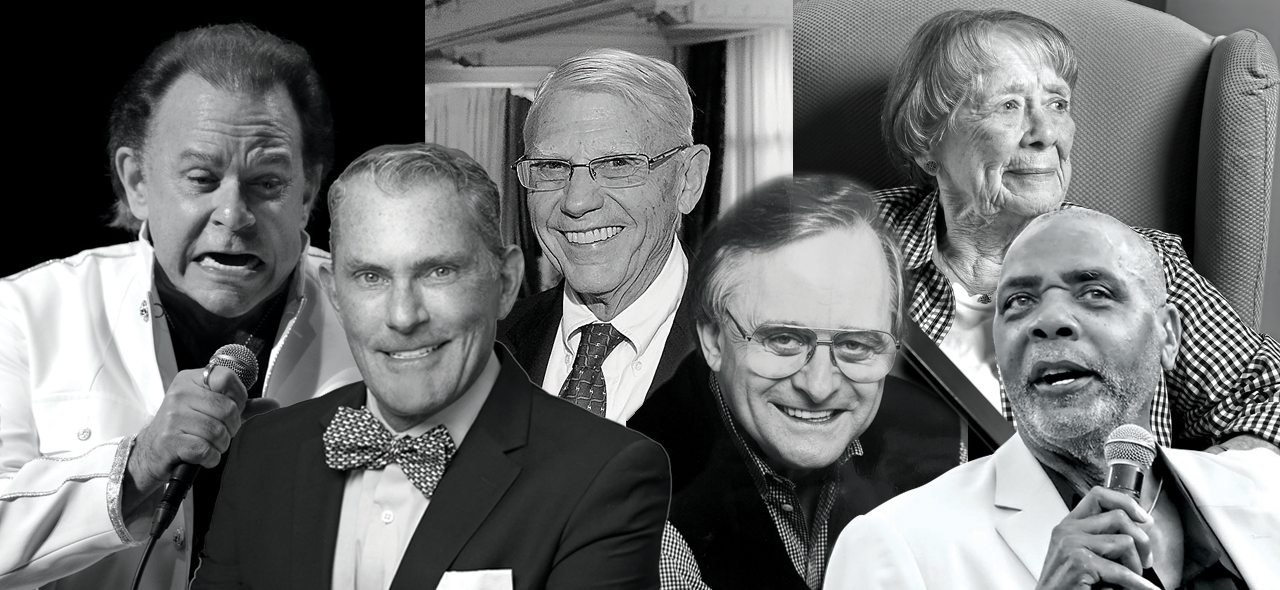
Donald Soffer, 92
Soffer was best known for turning 800 acres of swampland into Aventura, Florida, now home to luxury hotels and high-rises. The Duquesne native and his father co-founded one of Pittsburgh’s largest commercial real estate firms in the early 1960s, joining three other brokers in Don-Mark Realty, the predecessor to Oxford Development. The shopping centers and office towers Oxford built include South Hills Village, Monroeville Mall and One Oxford Centre — still the Golen Triangle’s third-tallest building.
George Greer, 92
As chairman of the Eden Hall Foundation, Greer left a lasting impact on the region, supporting numerous key issues over decades. His community commitment included serving as chairman of Blue Cross of Western Pennsylvania, The Children’s Institute of Pittsburgh, Fort Ligonier and Rolling Rock Club. Including a three-year stint in England, Greer spent 37 years with H.J. Heinz, first as an attorney and eventually as VP of Organization and Development. He was a board member of the Pittsburgh Cultural Trust and Westminster College and received honorary degrees from Chatham and Seton Hill universities.
Steve Reich, 64
During his lengthy career as a player agent, Reich represented Penguins Mario Lemieux, Tom Barrasso, Ron Francis, Kevin Stevens and coach Scotty Bowman. He presided over RBRT Sports Group from 1993 to 2000, representing hockey stars Chris Chelios, Scott Gomez and Luc Robitaille and started Reich Publishing and Marketing in 2001. Reich was instrumental in helping Lemieux purchase the Penguins out of bankruptcy in 1999.
Dick Skrinjar, 74
Whether you were in the media or a regular Pittsburgher watching the local news, Skrinjar was a familiar face. He worked for former mayor Bob O’Connor as director of communications, former mayor Luke Ravenstahl as director of Citiparks and District Attorney Stephen Zappala as Senior Justice Project Manager. Prior to those positions Skrinjar worked at WPXI before moving to PennDOT, where he spent 20 years in communications, disseminating road and transportation information to all the media outlets.
Michael Pitterich, 70
The founder of Pitterich and Associates law firm also owned steel mills in Johnstown, New Brighton and Monaca. A big believer in live music, he opened the Altar Bar in the Strip, where he hosted Snoop Dog among others. He created the Pitterich Foundation after his brother died of bone cancer, supporting cancer research at Johns Hopkins and UPMC. He supported the Thomas E. Starzl Transplantation Institute after his successful liver transplant. He was a member of Georgetown’s 1789 Club, for donors who have given over $1 million, and his philanthropy also included leaving waiters tips of several thousand dollars.
Chuck Spatafore, 92
In the PBS documentary “We Knew What We Had: The Greatest Jazz Story Never Told,” Spatafore recalls the rich jazz culture of the Hill District where he was raised. “People called it a ‘ghetto.’ Ghetto? I called it paradise,” he said. After playing football at the University of Dayton, he became a jazz drummer during the late ’50s through the late ‘90s, forming the Chuck Spatafore Trio and playing in house bands backing Joe Negri and Johnny Costa on local TV. He was a 2019 inductee into Pittsburgh Jazz Legends by Manchester Craftsman’s Guild Jazz.
Arthur Lubetz, 85
His eye-catching architectural work included a 30-foot yellow pencil that pierced the second floor of Top Notch Art Supply in Oakland and a magenta wedge bisecting what’s known as the Dalzell House in Squirrel Hill. Lubetz designed the Carnegie Library’s Squirrel Hill branch, the colorful Sharpsburg Community Library and the Glass Lofts on Penn Avenue in Garfield. His believed architecture is a form of public art, and his Front Studio, where he worked and lived, was featured in the first solo exhibition of a local architect at the Carnegie Museum of Art’s Heinz Architectural Center.
Tim Stancell-Condron, 65
Tim Condron Floral Designs was the premier society florist for many years. Condron assumed that mantle from Jack Barto, opening his own shop on Centre Avenue. Known for exquisite taste, Condron had a fun-loving personality and a warm heart. After moving to Boston, he became director of business affairs at the Edward M. Kennedy Institute. He was involved with Hôpital Albert Schweitzer Haiti, the Persad Center, and was on the New England leadership board of the American Lung Association. He was also a member of the Patient Advocacy Council at the Dana-Farber Cancer Institute.
Judith Lomakin Dodd, 85
In 1974, Dodd founded the Allegheny County Women, Infants and Children (WIC) program, which provides nutritional assistance to at-risk mothers and children. The University of Pittsburgh described the program as the first of its kind in the country. She led the Pennsylvania Dietetic Association and the American Dietetic Association. Dodd became Giant Eagle’s first food and nutrition adviser in 1994 and served as an assistant professor in the Department of Sports Medicine and Nutrition at Pitt for over 35 years, retiring at age 81..
Marilyn Bruschi, 84
An interior designer who majored in Medieval French at NYU’s Institute of fine Arts, Bruschi worked on restoring Henry Clay Frick’s home, Clayton — Mrs. Frick’s and the children’s bedrooms, the music room and parts of Mr. Frick’s study. In 1979, she opened Merry B Interior Design, the first in Pittsburgh to exhibit Romare Beardon’s work. For 40 years she was involved in non-profit work through ASID. Active in Pittsburgh Opera, she was president of the Guild Council. Her garden is in the Smithsonian Archives of American Gardens, and she co-founded the Garden Club of Allegheny County’s Native Plant Initiative, adopting Point State Park as the club’s garden project.
Frank Pistella, 74
Pistella spent nearly 30 years as a Democratic state representative for Garfield and Bloomfield, sleeping many nights on his office couch in Harrisburg. He championed women’s rights and senior citizen issues. He later worked as an attorney for the nonprofit Neighborhood Legal Services, helping low-income and working-class people. When he wasn’t walking in parades, he was an avid reader and student of American history.
Mary Kay Poppenberg, 85, and Oliver Poppenberg, 88
They were a dynamic couple engaged in different corners of the Pittsburgh community. Mary Kay served as director of the Carnegie Museums as well as CEO of the Greater Pittsburgh Office of Promotion. She founded the Pittsburgh Film Office, which was instrumental in bringing the movie industry to Pittsburgh. She later served as vice president of Chatham University. Oliver was a pioneer of information technology who implemented computing systems at numerous companies including National Steel and Joy Manufacturing. Quaker Valley School District became one of the first in the country to give students computers through his volunteer efforts.
Patrick John Foy, 88
Foy helped develop the Pittsburgh dining scene in the 1960s and ’70s. An advertising executive with no restaurant experience, he and his business partner Bill Millar opened the Pewter Mug on Market Square, followed by Walt Harper’s Attic, 3 Lions in the Law & Finance Building and Coach and Eight in Shadyside. He bought the legendary Hyeholde in Coraopolis from its founders, William and Clara Kryskill, who had opened it in 1937, and gave it a more cosmopolitan twist. The Kryskill’s daughter, Barbara McKenna, repurchased the restaurant, which is now owned by its longtime chef, Chris O’Brien.
Julia Parsons, 104
Parsons was a U.S. Navy code breaker during World War II and a member of a top-secret team of women who unscrambled messages from German U-boats. Growing up during the Depression, she loved puzzles and crosswords, which came in handy when she deciphered military messages created by the Enigma machine, which generated millions of codes. She joined the war effort in 1942 after reading about a Navy program called Women Accepted for Volunteer Emergency Service, or WAVES. A graduate of Carnegie Mellon, she received officer training at Smith College, taking cryptology and naval history courses. In later years she was a daily Wordle player.
Albert Muse, 89
Muse traveled to every continent except Antarctica, was accomplished at waltzing, and was a keen investor through the family company, Crown Coal & Coke Company (now known as the Muse Company), and in people. A founding member of the Eye & Ear Foundation, he joined the board in 1969 and helped build the endowment that funded the Eye & Ear Institute in 1985. He served the hospital, foundation and institute for more than 60 years.
Lou Christie, 82
Born Lugee Alfredo Giovanni Sacco, he became famous as Lou Christie. A song he co-wrote called “The Gypsy Cried” became the Crescent native’s first million-seller in 1963. A few months later, “Two Faces Have I” rose to number six on the charts. His falsetto voice pierced on subsequent hits including “Lightnin’ Strikes” and “Rhapsody in the Rain,” which the Catholic Church banned for its lyrics. He continued to record through the mid-1970s. Christie returned to Pittsburgh and drove a truck until the ‘80s oldies revival put him back on tour.
Jay Aldridge, 95
Aldridge was the first president of the economic development group known at Penn’s Southwest Association, which attracted hundreds of companies, including many international, to the Pittsburgh region during its transition from heavy industry to a modern innovation-based economy.
Tim Rooney, 84
The nephew of Steelers founder Art Rooney worked in NFL front offices from 1972 until he retired in 1999. Director of scouting for the Steelers from 1972-79, he helped build the 1970s Super Bowl dynasty. He took coach Chuck Noll to Kent State to watch Jack Lambert — one of five Steelers from the 1974 rookie class to become Hall of Famers. It was regarded as the best draft in NFL history. Rooney went on to work for the Lions and Giants, helping the Giants win the Super Bowl in 1986 and 1990.
Jack Etzel, 91
His “Etzel At Large” features on WPXI-TV documented life in Pittsburgh for two decades. Quirky and informative, they highlighted a range of local subjects, many unfamiliar until he explored them. Born in Washington, D.C., he played the trombone in the U.S. Navy band. In 1974, he moved to Pittsburgh to join WPXI, where he was also known for “Jack of all Trades,” a segment on home improvement.
John Dindak, 97
Believed to be the longest-serving mayor in Pennsylvania history, Dindak presided over West Homestead for 50 years, retiring at age 95. A Navy veteran of World War II and the Korean War, he began his political career on borough council and was elected mayor in 1972 while working as an expeditor at U.S. Steel’s Homestead Works.






